Pennsylvania Native Plants: 14 Amazing Flowers For Your Garden


We've pulled together a selection of 14 native plants in Pennsylvania which will serve as a great foundation for cultivating a vibrant and ecologically mindful garden.
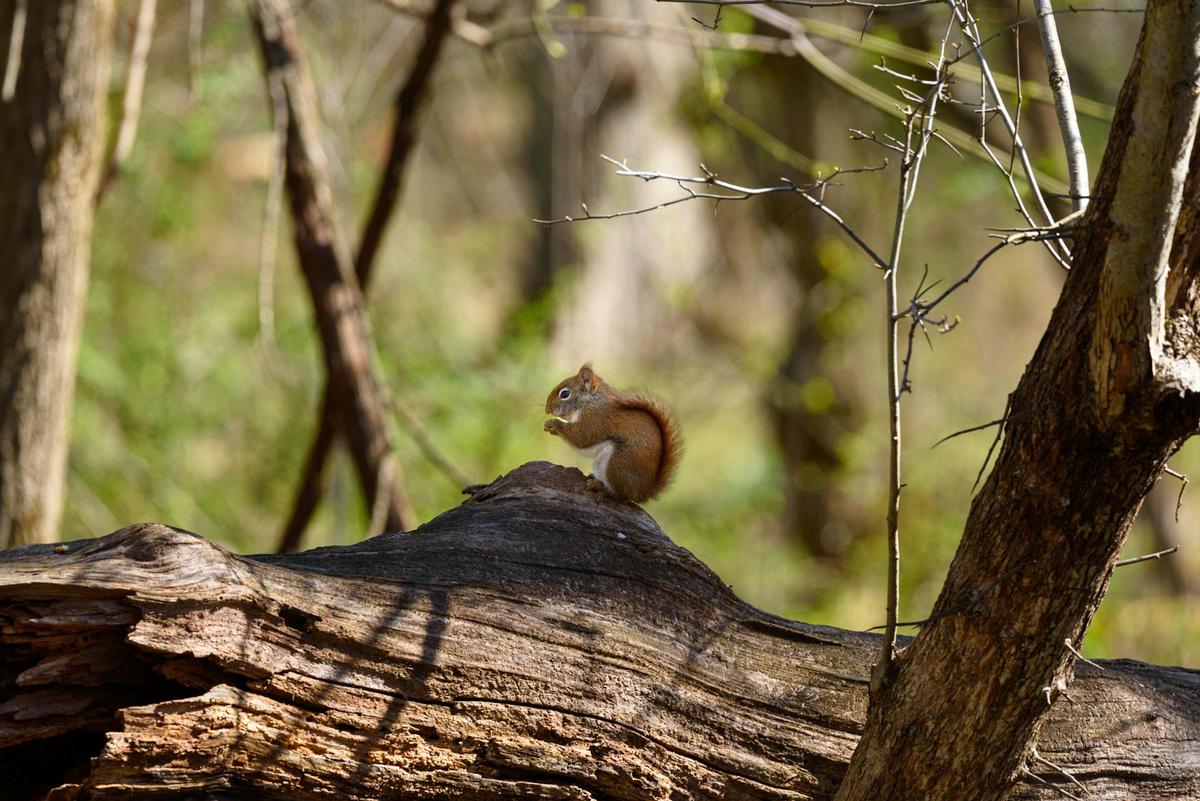
Pennsylvania's landscape is graced by a rich tapestry of native plants, each uniquely suited to its varied environments. As you'll uncover in the upcoming sections, nurturing these native plants in your Pennsylvania garden comes with a great array of advantages. We've pulled together a selection of 14 native plants in Pennsylvania which will serve as a great foundation for cultivating a vibrant and ecologically mindful garden. But before we get into that, let's cover the compelling reasons why incorporating native plants in your yard is one of the most responsible landscaping techniques currently available.
What are Native Plants?

In Pennsylvania, native plants are those that have long inhabited the area we now recognize as the Keystone State (and extend across much of the northeastern United States). Unlike non-native plants, the native flora we engage with today - like those highlighted by the Pennsylvania Native Plant Society and at regional native plant sales - trace their lineage back to ancestral plants that thrived within (and helped define) Pennsylvania's ecosystems well before European settlers arrived. Over time, these plants have evolved unique adaptations to thrive within Pennsylvania's distinct environment, all while offering vital wildlife habitats.
Pennsylvania's native plants not only play a pivotal role in sustaining native wildlife and ecosystems but also bring significant value to gardens and landscapes. Many native plants in Pennsylvania demonstrate swift growth, innate resilience to drought, limited need for fertilization, and require only minimal maintenance. Finding the native plants for your specific Pennsylvania locale can elevate the aesthetics and ecological significance of any landscaping venture.

Why are Native Plants Important for Pennsylvania Landscapes?
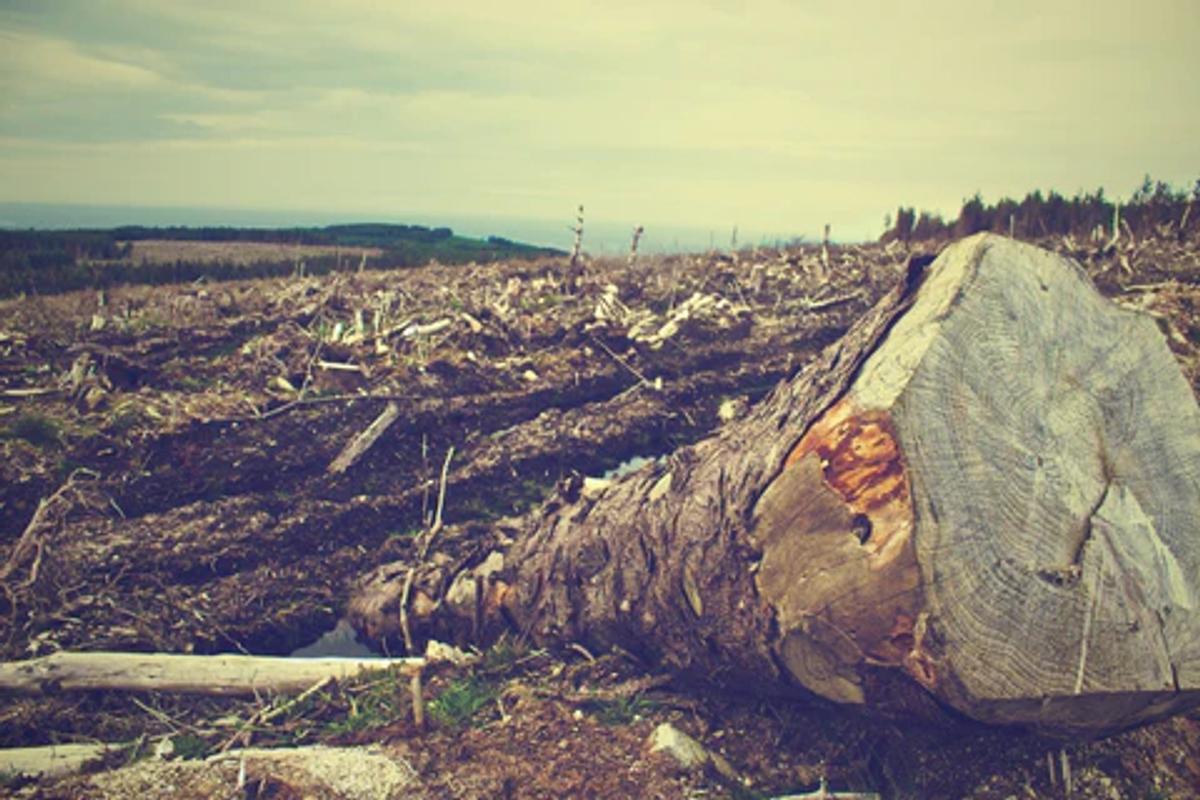
There has been an ongoing and incredible loss of animal life worldwide over the past 150 years. This is a tragedy that has affected almost every major group of wildlife, including the many bees, butterflies, birds, and other beneficial pollinators that allow our natural world to function. A leading driver of this crash is land mismanagement: as humans, we've spent far too long removing the native trees, shrubs, and herbaceous plants our local wildlife needs and replacing them with non-native species or even invasive plants which support fewer species than native plants and can devastate otherwise thriving ecosystems.

By contrast, growing native plants allows each of us to directly repair and reverse this course. Not only are native plants especially well-adapted to provide food and shelter for native bees, beneficial insects, birds, and other wildlife; these plants also tend to cycle nutrients into the soil more efficiently, and retain more storm water, than any kind of turf grass. Further, unlike your typical ornamental plant, many species of native plants require little watering, few to no soil amendments, and are deer resistant once established. For all these reasons and more, it's important to follow responsible landscaping techniques and choose native plants when planning your garden beds, pollinator gardens, or other landscaping efforts. By doing so, you will help to reduce atmospheric CO2, conserve water, and reestablish a healthy ecosystem and natural habitat for your part of the planet.
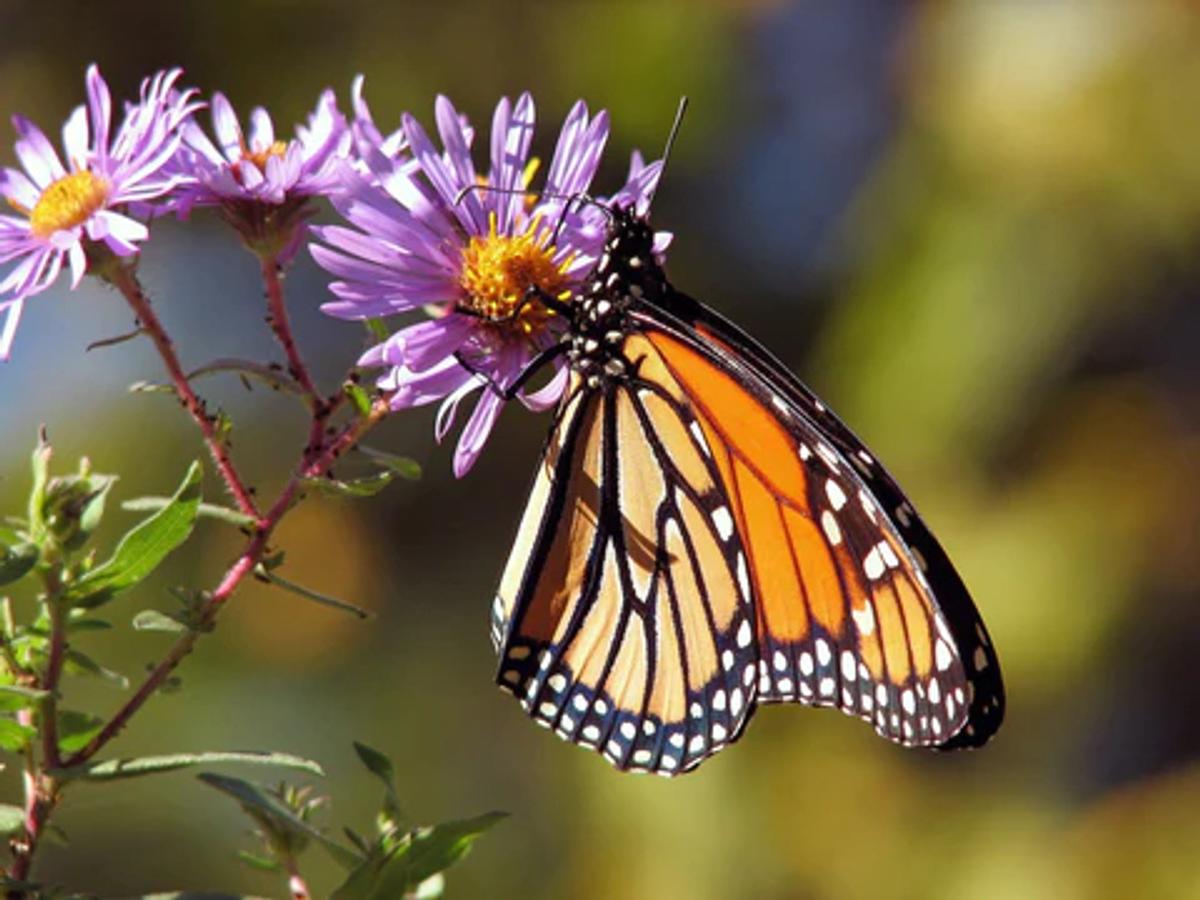
Pennsylvania Native Plants for Your Yard
Below, I share just a handful of the native perennials for pollinators that call Pennsylvania home. I split this list into three major groups of sun exposure: Full Sun, Part Shade, and Full Shade. Each one of the native species listed will support native wildlife and some can be found, along with some of our other favorite Pennsylvania native plants, in My Home Park's pre-designed gardens for Pennsylvania. Between this list and our catalogs, you should be able to find the best native plants for your yard and which you can order today.

Native Plants for Full Sun
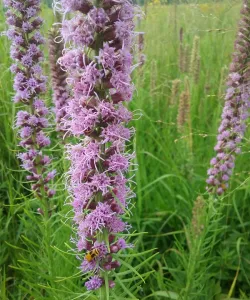
Dense Blazing Star, also called Marsh Blazing Star, makes an immediate impression with its tall spikes of vibrant, deep purple to bright mauve flowers. This plant starts the year forming thin, grass-like leaves before shooting up its flowering stem. Post-bloom, blazing star seeds are readily available for local birds to eat. Thriving in sunny habitats with wet soils, this herbaceous perennial is a magnet for bees, butterflies, and seed-eating bird species, making it an excellent choice for gardens designed to support local ecosystems.

Butterfly Milkweed is unique as one of our only brilliant orange flowers. This plant typically blooms from early summer to fall, and grows up to 2 to 3 feet tall. Beyond its aesthetic appeal, this plant offers many practical benefits for your yard as well. It is deer resistant and its deep taproot makes it a highly drought tolerant plant once established, making it an excellent choice for water-wise landscaping. By planting Butterfly Milkeed, you're not only adding beauty to your outdoor space but also contributing to the conservation of vital pollinators and creating a haven for wildlife.
As one of a suite of native milkweed species (plants in the genus Asclepias), Butterfly Milkweed is also a critical host plant for endangered Monarch Butterflies. Monarch Butterfly caterpillars feed exclusively on milkweeds, so by cultivating in your butterfly gardens, you'll be creating a stunning landscape while also contributing to the conservation of this fragile and beautiful species.
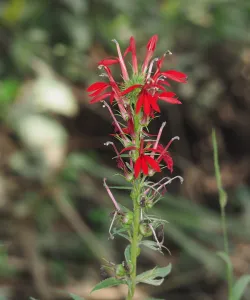
Cardinal Flower is a striking herbaceous perennial renowned for its vibrant scarlet blooms which erupt from upright stems girded with lance shaped green leaves. This stately accent plant will do best in areas with moist or wet soil and partial to full sun, particularly in rain gardens, or along the edges of sunny ponds, streams, and wet meadows. Its eye-catching tubular flowers appear in mid to late summer, and reliably attract hummingbirds and butterflies. With its bold color and impressive height (up to 4 feet), the Cardinal Flower brings both visual drama and ecological significance to gardens, providing a valuable nectar source for pollinators and adding a touch of elegance to waterside landscapes.
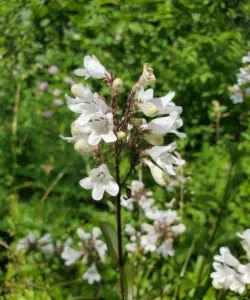
Smooth Penstemon is a native perennial known for its graceful appearance and many ecological benefits. Its elegant spires of tubular white flowers reach up to four feet and bloom from late spring to early summer, attracting a variety of pollinators such as bees and butterflies. Like many other full sun-loving native species, this plant is drought tolerant and will thrive in well-drained soil. With its low-maintenance requirements and ability to tolerate dry conditions, Smooth Penstemon can be a beautiful and beneficial addition to your landscape.
Native Plants for Part Shade
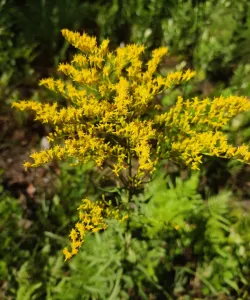
As a member of the Goldenrods (genus Solidago), Sweet Goldenrod is one of the most important pollinator powerhouse plants and provides support for native bees, butterflies and more in late summer to early Fall. It is relatively unique within the Goldenrod family as its leaves emit a pleasant anise-like scent when crushed. Sweet Goldenrod is typically found in dry to mesic habitats and thrives in well-drained soil with full sun, making it a versatile and aromatic addition to your native plant landscape.
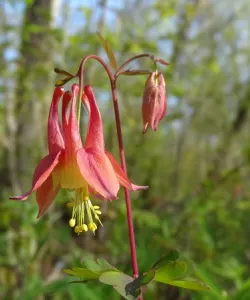
Among many Pennsylvania native plants Eastern Columbine brings a special touch of elegance to any garden. Its unique red and yellow flowers bloom from late spring to early summer and dangle from slender stems that reach up 1 to 3 feet. This plant thrives in part shade but will tolerate conditions closer to both full shade and full sun, making it one of the best native plants for gardens along forest margins and other dappled native landscapes with well-drained soils. Besides its visual appeal, Eastern Columbine plays a vital role in supporting pollinators, as its intricate flowers provide nectar for hummingbirds and bees.

Virginia Bluebells are spring ephemerals that bloom in clusters of soft light blue flowers in early spring, creating a carpet of color before many other herbaceous perennials have gotten their start. This native plant thrives in rich, moist soil and prefers partial to full shade, where it will grow up to around two feet in height. Its bell shaped flowers attract many pollinators during their relatively short mid-spring blooming period.
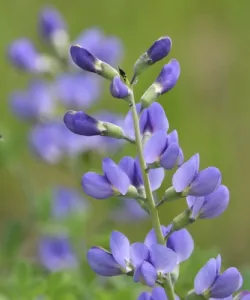
Blue False Indigo is a robust and sturdy native perennial with striking blue-violet flower spikes that blooms in late spring to early summer. This is also a very adaptable plant, which can thrive in a variety of soil types, including poorer soils, making it a dependable addition to many part shade landscapes. Its deep roots also contribute to soil stabilization and erosion control. With a long lifespan and minimal maintenance requirements, this is a valuable choice for both experienced and novice gardeners seeking a resilient and visually striking native plant.

Another member of the Goldenrod family (you can't have too many!), Blue-Stemmed Goldenrod is a powerful herbaceous perennial for pollinators. This plant's intriguing bluish stems burst out with delicate yellow flowers in late summer to early fall. As much a functional native species as it is an ornamental plant, Blue-Stemmed Goldenrod is a wonderful addition to naturalistic landscapes and pollinator gardens alike. Blue-Stemmed Goldenrod thrives in a variety of soil conditions and its nectar-rich flowers are especially attractive to bees, butterflies, and other pollinators, contributing to local ecosystem health.

Blue Mistflower is a charming native perennial that produces clusters of fluffy, powder-blue flowers from late summer through fall. Blue Mistflower normally grows to a height of one to two and a half feet. This plant's vibrant blossoms and ability to thrive in various soil types, including moist soils and clay, make it a valuable addition to gardens and landscapes. Its nectar-rich blooms will attract butterflies and other pollinators to the more dappled to full sun areas of your yard.
Native Plants for Shade
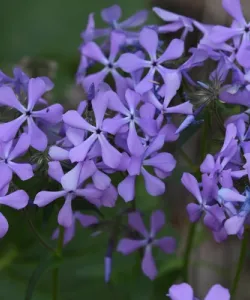
Wild Blue Phlox thrives in the shade and dappled sunlight of woodland settings. This plant is characterized by its clusters of fragrant flowers which bloom lavender-blue in the spring. Wild Blue Phlox prefers well-drained, humus-rich soils and is often found growing along stream banks or in moist woodlands. It forms in spreading clumps of foliage that reach about 12 to 18 inches in height, often creating a lush ground cover. Beyond its aesthetic appeal, Wild Blue Phlox serves as an important resource for native pollinators. Its nectar-rich blossoms attract butterflies, bees, and hummingbirds, enhancing the biodiversity of your garden.
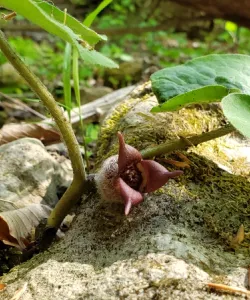
Wild Ginger is a charming native woodland perennial with unique heart-shaped leaves. This low-growing plant spreads by rhizomes to form lush, dense carpets of green foliage, making it an excellent ground cover choice for shaded areas with well drained moist soils. Wild Ginger features relatively inconspicuous flowers which are tucked beneath the leaves and often hidden from view, but they emit a delightful spicy fragrance that attracts early spring pollinators like bees and flies. The velvety leaves provide cover for small creatures and its rhizomatous growth habit helps control soil erosion.
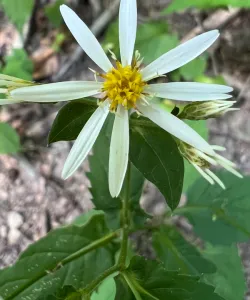
White Wood Aster is a delicate yet resilient native wildflower that favors woodlands and shady gardens with its understated beauty. This perennial plant features dainty, daisy-like white flowers that bloom in late summer to early fall, providing a late-season burst of color when many other plants have finished flowering. Reaching a height of about 1 to 3 feet, White Wood Aster is known for its slender stems and broad dark green leaves, which create an attractive backdrop for its starry blooms.
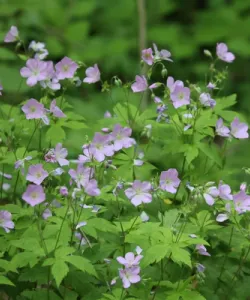
Wild Geranium features deeply lobed, palmate leaves and dainty pink to lavender-hued flowers, adding a heap of simple beauty to woodland gardens and shaded borders. This plant blooms in late spring to early summer, and its rhizomatous growth habit creates spreading clumps that help stabilize soil and prevent erosion. As with many other plants on this list, Wild Geranium also supports local wildlife and enhances the overall health of garden ecosystems, embodying the beauty and benefits of native plants in shaded landscapes.
What You Can Do Today

If you live in Pennsylvania, My Home Park has designed gardens that bring together native plant species produced by expert, organic native plant growers drawing on diversified gene lines. Any one of these gardens is designed to provide native plants that will bloom from early spring to fall, beautifying your landscape while supporting wildlife. Check out our native plants for Pennsylvania or browse any of the other states we serve in the Mid-Atlantic, Great Lakes, and beyond to get started today!

Share this article


